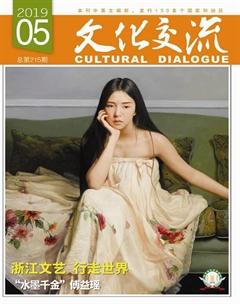巧手修复,梅里云裳重现芳华
俞吉吉
丝丝入筘,经纬交织,梅影现兮;银针飞走,彩线纳绣,云裳飘兮。
500年前的明代服饰,出土时已残破不堪,如今,经过中韩两国文物工作者的巧手修复,它们得到复原,重新焕发了光彩。
“梅里云裳:中韩合作嘉兴王店出土明代服饰修复与复原展”亮相中国丝绸博物馆纺织品文物修复展示馆,一段长达数年的中韩合作修复和复原明代服饰的故事浮出水面。同期开展的,还有时装馆内的“一衣带水:韩国传统服饰与织物展”。
春日的西子湖畔,中韩两国的传统服饰故事,在这里述说着一衣带水的浓浓情谊。
13年前,嘉兴古镇现明代望族墓
明代的对襟上衣、大袖衫、纱裙、绸裤……绫罗绸缎在这里是褪色的岁月,也有了现代的靓丽阐释。“梅里云裳:中韩合作嘉兴王店出土明代服饰修复与复原展”展出了中韩合作修复的以李湘之妾徐氏墓(M4)出土服饰为主的明代女式服饰,还有多件服装的复原件及制作工艺。
李湘是何人?故事还要从13年前一处意外发现的明代古墓说起。
“蚕丝之广,不下吴兴”。王店,旧称梅里,为明代兴起的丝绸业专业市镇,至明代中叶,此地“镇民之居,夹河成聚,为里者三”,成为嘉兴四大镇之一。2006年11月,浙江省嘉兴市王店镇在平整该镇南部一处叫李家坟的土墩时发现了一处古墓,经发掘清理,确认墓主人为明代中后期文林郎李湘及妻妾四人的合葬墓,墓中还出土了大量包括丝绸服饰在内的纺织品文物。
李湘一族,属梅溪李氏,在明清两代是当地的望族。李湘的祖上自元朝末年从江苏江阴迁至梅里(王店镇)一带。李湘生于明成化二十三年(1487年),字本澄,号东泉。李湘一生未建功名,也未做官,但其子李芳、其孙李衷宏(又名李原中)均中进士。李湘死后“赖子芳贵”,被追封为文林郎。文林郎为正七品,是古代有官名而无职事的官称。徐氏为李湘之妾,徐氏墓中未发现墓志铭,其棺盖墨书“明故庶母徐孺人靈枢”。
该批丝绸服饰出土后,中国丝绸博物馆承担了应急保护及修复工作。据策展人王淑娟介绍,当时墓葬共发掘出四具棺材,从南至北依次编号为M1至M4,分别是李湘的侧室陈氏、李湘本人、李湘之妻和李湘侧室徐氏的墓葬。前三具的出土文物留在了嘉興博物馆,李湘之妾徐氏墓(M4)出土的服饰,来到杭州,由中国丝绸博物馆与韩国传统文化大学合作修复。修复的同时,中韩双方又各自复原制作了一件徐氏的袍服。此外,北京服装学院与中国丝绸博物馆还对墓中出土的几件袍服做了形制上的复原,再现了这些服饰当年亮丽的样子。
近期,这个中韩两方为期数年的“嘉兴王店出土明代服饰修复与复原”合作项目终于完成。中国丝绸博物馆特别在纺织品文物修复展示馆举办了“梅里云裳:中韩合作嘉兴王店出土明代服饰修复与复原展”介绍这一成果。
华服背后,是中韩联手的用心修复
“M4出土的服饰残缺较甚,每件文物均呈支离破碎状,所幸残片的牢度较好,我们这次采用了针线缝合的物理方法进行修复。”王淑娟站在展厅中说道,她的眼前是一件复原后的獬[xiè]豸[zhì]绣补云鹤团寿纹绸大袖衫,大红的底色,正中的补子上金边圈起一朵朵祥云,还有一只张大口的神兽獬豸,栩栩如生,再看一侧的织金双鹤胸背曲水地团凤纹绸大袖衫复原件,一样的大红底色,相对而视的仙鹤在云间飞翔,吸引了不少参观者驻足观赏。
众人不知的是,为了重现这两件明代华服,中国丝绸博物馆和来自韩国传统文化大学的师生们花费了6年之久。
2012年5月,韩国传统文化大学和中国丝绸博物馆共同签署了合作备忘录。随后,双方开展“嘉兴王店出土明代丝绸服饰”的研究、保护和复制项目。2014年,双方完成了修复工作,2018年,复原件制作完成。在此期间,双方多次互派人员开展访问和交流。
在纺织品文物修复展示馆举办的服饰修复展已不在少数,在王淑娟看来,这场展览更接地气,更贴近观众。“展示了修复还原的全过程,同时展览通过模特陈列的方式,让观众可以直观地一睹明代古人着装的风采。古人是如何穿这些宽大的古装的?相比于以往的学术文字,更受观众欢迎。”她说。
如何复原?首先要修复。支离破碎的残片修复成衣并非易事。所幸各残片的牢度相对尚好,因此,这批出土服饰采用了针线缝合的物理方法予以修复,具体说来,就是选用与文物相近的织物作为背衬,衬于破损服饰残片之下,使用相应针法将文物与背衬织物缝合加固。但因各件服饰缺失较多,所以在修复前需先对其形制进行研究,确定后方按形制实施修复加固。
在长达2年的修复过程中,王淑娟表示,清洗出土服饰和残片平整等环节并不容易,她说,明代服饰在江浙一带出土较多,因为江浙一带气候较为潮湿,深埋地下长期泡水的服饰就会出现皱缩、变形,同时,经过数百年后服饰也比较脆弱,增加了清洗难度,文物不可能用熨斗烫,如何整平呢?“用磁块压平。”她说。
相比于修复,复原的难度系数更大,前后花了6年时间。由北京服装学院复原的獬豸绣补云鹤团寿纹绸大袖衫和韩国传统文化大学复原的织金双鹤胸背曲水地团凤纹绸大袖衫均从面料复原开始,到补子(系补缀于品官补服前胸后背之上的一块织物,为明清官服饰制度的一个重要特征)织绣工艺、服装的裁剪及缝制工艺,较为全面地再现了织造、刺绣及服装的制作过程。
残缺的部分如何补上?需要从现存的部分寻找蛛丝马迹,比如线头、折痕等。由于时间久远,出土服饰的颜色已经褪去,它们原来的色彩是怎样的呢?这就需要从现存的同时期的传世文物中去推断。好在还有传世的明代服饰,王淑娟说,两件大红底子复原服饰的颜色就是从山东曲阜孔府的传世明代服饰中推断得到。
如果说修复是使纺织品文物的寿命能够尽可能地延长,那么,复原则是使古代服饰的制作工艺能够被认知,从而得以传承和发扬。
一衣带水,中韩传统服饰一脉相承
“像王店出土的松竹梅双色缎巾,有着非常精致的松竹梅暗花,从这些出土的丝绸就能看出明代王店这一带丝绸业的繁荣。”王淑娟表示,此外,出土服饰中出现较多的四季花卉纹、蜂蝶纹、菱格螭纹等都是明代的流行纹样。同时,她表示,现在不少流行汉服的原型就是明代服饰。明代服饰也影响了同时期的韩国传统服饰,“在形制上,同时期的韩国传统服饰在明代服饰的基础上进行了改良,像女士的裙装,腰际线上提了不少,但是在不少男士服装上,图案和纹样在两国都是相同或相近的。”她说。
中韓两国相距甚近,曾几何时,中国明朝和韩国朝鲜王朝之间的文化交流是如此密切,衣冠服饰是如此相似。同期亮相时装馆的“一衣带水:韩国传统服饰与织物展”,就很好地再现了两国一衣带水的历史渊源和深厚情谊。
展览展出韩国传统文化大学纤维专业师生通过考证复制的14到20世纪韩国服装和纺织品115件,其中“传统服饰”版块展示了韩国传统服饰50余套/件,分王室服饰、礼服、男装、女装、童服、巾帽、鞋靴七个系列;“传统织物”版块展示了应用韩国国家级纺织非物质文化技艺制作的“春布”、展现近期研究复原的已失传的织金、罗、纹缎、纹绫等复原织物及介绍现代机器织造生产的各类韩国服装面料。
据悉,这些韩国传统服饰及纺织品,如此集中地在中国的博物馆内展出,在国内还是首次。展览试图通过展示多姿多彩的传统韩国服饰、纺织品以及在服饰制作过程中所运用的织造和印染手工技艺,以此为契机增进中国观众对韩国传统服饰文化的了解,为中韩两国对织染非物质文化遗产传承、复原和活用的沟通交流提供有益机会。本次展览将持续至6月9日。
“中韩两国传统服饰有许多相通之处,在服饰修复和复原领域,双方的文物科技合作前景广阔。此次举办两大展览也是对我们合作和交流的一次回顾和检阅。”中国丝绸博物馆馆长赵丰表示。
(本文图片摄影:魏志阳)
Ming Dynasty Fashion Restored by Textile Conservators
By Yu Jiji
The matchless craftsmanship and joint efforts of Chinese and Korean antiquarians have restored the gloss and glory of womens silk fashion of a family living in the Ming Dynasty of China. At the Textile Relic Restoration Exhibition Center of the China National Silk Museum in Hangzhou, the hard work and superb skills of the restoration and replication experts of the two countries are displayed in a themed exhibition held together with a side event dedicated to traditional Korean clothing and fabrics.
Most of the exhibits are selected from the archaeological findings from the tomb of the Xu-surnamed concubine of Li Xiang, a man from an influential clan living in present-day Wangdian Town in Jiaxing, Zhejiang Province. The clan moved from Jiangyin in Jiangsu Province to present-day Jiaxing in the later years of the Yuan Dynasty (1279-1368). Born in 1487, Li Xiang had three wives and lived an affluent life. The family nurtured two “Jinshi” (a successful candidate in the highest imperial exanimations).
In November 2006, archaeologists unearthed a tomb together with a large number of textile articles underneath a mound in a place called Lijiafen (literally the Li family cemetery) in the southern outskirts of the town. From the exhibits that include Ming-style jackets with buttons down the front, wide-sleeve garments, gauzy skirts, and silk pants, one can see the lavish lifestyle in the most glorious years of the illustrious Lis family.
According to Wang Shujuan, the curator of the Hangzhou exhibition, a total of four coffins emerged from the excavation, with the findings from the tomb of one of Lis concubines shipped to Hangzhou, where textile conservators of the China National Silk Museum and the Korean National University of Cultural Heritage of South Korea started a restoration project in partnership.
The restoration of two of the unearthed silk pieces took six years to complete. The result is two immaculate pieces elaborately adorned with embroidered patterns. Visitors find it hard to imagine how the dust-laden silk fragments from about 500 years ago could be put together again. Behind the virtuosity is a wide range of preservation techniques and expertise for all types of media and material.
“Considering the original state of the objects unearthed from the No. M4 tomb, the conservators worked out a plan based on physical treatments. Basically it was needlework. Luckily, the bitty fragments had a level of firmness that made repair and restoration technically possible. The restoration project also spawned a series of cultural exchange activities,” Wang Shujuan shares, adding that the exhibition in Hangzhou has its unique features, compared with other textile restoration projects hosted by the museum. During the restoration project, Chinese and ROK experts visited each other several times. In 2014, the restoration of the two originals was finished. In 2018, the replicas with new fabrics, new colors, and new patterns, were produced.
“The exhibition is designed in a way that allows visitors to see the entire process of restoration work. The use of life-models wearing the replicas, instead of text introduction, is also an innovative touch that allows the visitor to see real-life fashion of the privileged class of late Ming times of China,” comments the curator.
Textiles are among the most fragile artifacts, as they are susceptible to damage from atmospheric pollutants, moisture, biological organisms, and environmental changes and care varies with size, shape, material, and condition issues, all of which a textile conservator must be well versed. The “physical method” mentioned by Wang is to use similar fabrics as back lining. Using special needlework, the fabric is stitched into the fragment by following the details of the restored image of the original garment. The two years intensive work started from rinsing, cleansing, and smoothing by using of magnetic tools. The first stage of repair work was no easy task, due to the high air humidity in Zhejiang and Jiangsu provinces, where a large number of Ming-style clothing articles have been found.
However, stitching the original fabrics together into complete cloths was nothing if compared with the difficulty level of making new replicas on the basis of restored clothes. The former took about two years whereas the latter six. A lot more was involved. For example, it took a lot of work to figure out the original color of the fabric. Even the smallest details, such as thread residues, are crucial for the conservators to work out substitutes perfectly matching the missing parts. When the experts were clueless about the details of the original pieces, they turned to related archaeological findings for reference and inspiration. Fortunately, they were able to make decisions after look at some Ming fashions.
The side exhibition that displays the evolution of the clothing styles as well as weaving technology and dyeing craftsmanship of South Korea from the 14th century to the 20th century is the first one of its kind ever staged in a Chinese museum.
The exhibition closes on June 9, 2019.

